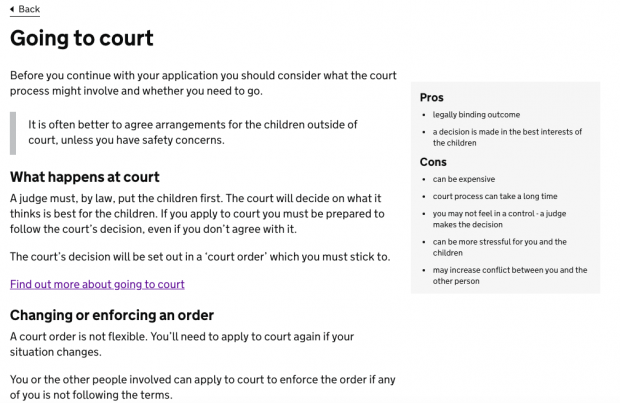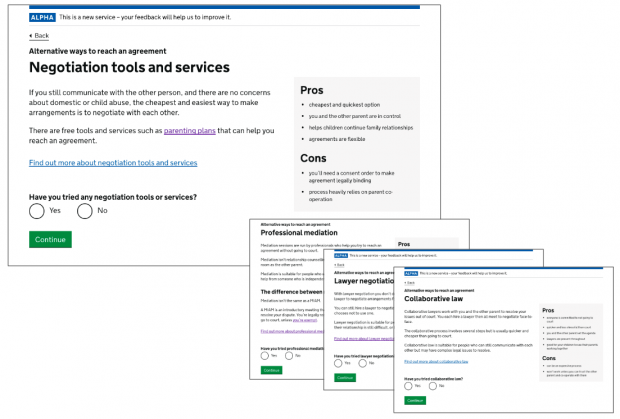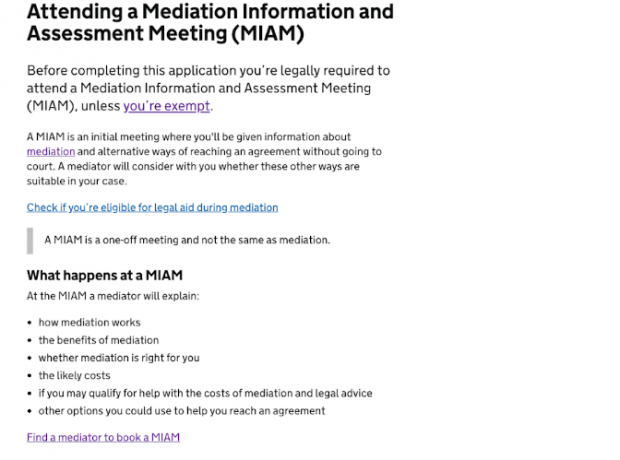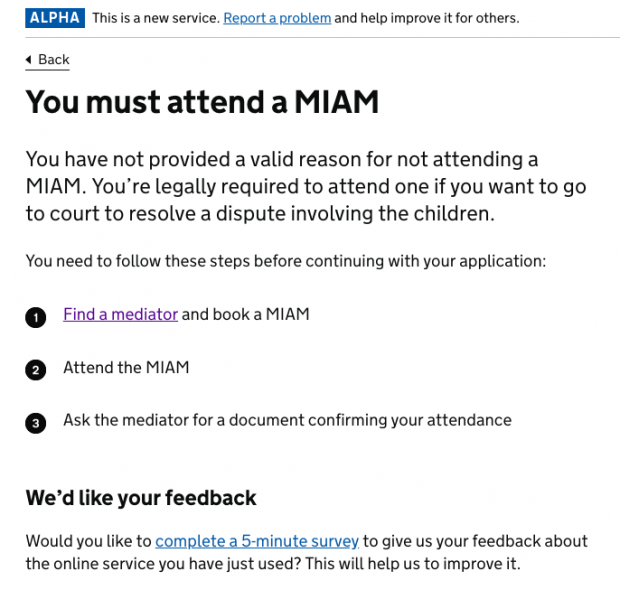“If you want to encourage people to do something, make it easy.”
That’s what Richard Thaler, latest Nobel Prize winner in economics, proposes we need to do to influence human behaviour.
I manage a digital team working with policy makers. Our role is to experiment with new approaches to policy making and service design. We believe so-called ‘nudge’ principles could help us design services that lead to better outcomes for court users. We are also working with experts in this space such as the Behavioural Insights team.
What we’re doing
We’ve started by looking at the experience for parents who have separated and are making child arrangements. We want to inform them of their options and enable them to make a decision as to what they should do next after separation.
Over the past 2 years we’ve conducted research with around 140 parents and drawn on lots of academic literature. We’ve found that many parents aren’t aware of, or don’t understand alternative services available when applying to court to make child arrangements. As a result parents aren’t always in the best position to make a decision about what alternative services to use when in dispute.
Touchpoints such as information tools, mediation assessments and the process of making child arrangements are a huge opportunity to support parents through sorting out their child arrangements because a large proportion of our users will interact with them at different stages.
So we are identifying relevant interactions and working to improve them.
By making different touchpoints easy to use, simple to understand, asking for positive action and guiding users to specific outcomes based on their journey, we’re aiming to inform and guide behaviour so that more people who could benefit from out of court dispute resolution options are guided to them. This is how we are exploring this:
I didn’t sign up for this?!
We know that many applicants are unaware of the other options available to help resolve their issues and so end up with their mind set on making a court application. However there are often misunderstandings about the potential outcomes of the court process.

We’re presenting users with content that highlights important information about what it really means to go to court as part of the process of applying to make child arrangements. The impact on parents’ experience is that there is a better understanding of what to expect from the court process and the disadvantages of following that option.
We also observed how people’s perception of the court process can change with a feature that highlights the pros and cons of going to court through user testing and feedback from applicants.
What other services can I access?
We’re inviting people to find out about out of court services in a contextual manner before they consider going to court as an option. We’re measuring whether this leads to an increase on referral clicks to and potential uptake of these alternatives.

“Mediation - that’s when you sit in a room and think about things right?”
Users were very confused between the mediation assessment meeting, which is part of the process of applying to court and mediation as an out of court dispute resolution. Often people thought it was the same as counselling, even though, most parents must go to a meeting with a mediator before attending court, unless there are specific circumstances that exempt them. We’ve tried to make mediation easy to understand for people as a part of the process.

However, we also want to explore how we can make it easy to actually pursue the option once they learn more about it. Amazon are the kings of this with their “one click” ordering process. We’ll continue to explore how we make out of court options easy to access so that we can remove barriers and influence human behaviour in a positive way in coming months.

What next?
We’re closely monitoring our online users’ behaviour through our analytics tools and we plan to implement further changes in a controlled manner. What we want to understand is how to help people make choices. Not only by offering information, but by understanding what’s stopping them actively pursuing alternatives.
We need to understand what it is that drives people to act in a specific way. What features are causing them to make a particular choice? That can then help inform the design of our products as well as our policies.
We have the digital tools to experiment with a variety of options and we hope to affect people’s behaviour in a positive way, so watch this space.
